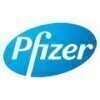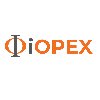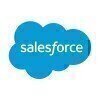Support Engineer
Support Engineer Interview Questions and Answers for Freshers

Asked in CS TECH Ai

Q. What are the different tests to be conducted during pipe laying and sampling?
Various tests ensure the integrity and safety of pipes during installation and sampling processes.
Visual Inspection: Check for physical damage or defects in pipes before installation.
Hydrostatic Testing: Fill pipes with water to check for leaks and ensure they can handle pressure.
Air Testing: Use air pressure to detect leaks in the piping system.
Soil Sampling: Analyze soil around the pipe for corrosive properties that may affect pipe integrity.
Alignment and Grade Testing: Ens...read more

Asked in CS TECH Ai

Q. What are the various types of pipelines and their laying methods?
Pipelines are essential for transporting fluids, gases, and solids in various industries, each with specific types and laying methods.
1. Liquid Pipelines: Used for transporting liquids like oil and water. Example: Crude oil pipelines.
2. Gas Pipelines: Designed for natural gas transport. Example: Transcontinental gas pipelines.
3. Slurry Pipelines: Transport mixtures of solids and liquids. Example: Mining slurry pipelines.
4. Product Pipelines: Carry refined products like gasoli...read more

Asked in CS TECH Ai

Q. What is the water mix ratio for M25 grade concrete?
M25 grade concrete typically has a water-cement ratio of about 0.45 to 0.55 for optimal strength and workability.
M25 concrete has a characteristic compressive strength of 25 MPa.
The water-cement ratio is crucial for achieving desired strength and durability.
For M25, a common mix ratio is 1:1:2 (cement:sand:aggregate) with a water-cement ratio of 0.45.
Example: If using 400 kg of cement, water should be around 180-220 liters.

Asked in CS TECH Ai

Q. What tests are conducted during concrete casting?
Concrete casting tests ensure quality, strength, and durability of the concrete used in construction projects.
Slump Test: Measures the workability of fresh concrete; a higher slump indicates more fluidity.
Compressive Strength Test: Assesses the concrete's ability to withstand axial loads; typically done using cube or cylinder samples.
Air Content Test: Determines the amount of air in the concrete mix, which affects durability; can be measured using a pressure meter.
Temperature...read more

Asked in Square Bpo Services

Q. What are your language skills?
I am proficient in multiple programming languages including Java, Python, and C++.
Proficient in Java, Python, and C++
Experience with scripting languages such as Bash and PowerShell
Familiarity with web development languages such as HTML, CSS, and JavaScript

Asked in Epsilon

Q. Explain DDL and DML commands.
DDL and DML are SQL commands for defining and manipulating database structures and data.
DDL (Data Definition Language) commands define the structure of the database.
Common DDL commands include CREATE, ALTER, and DROP.
Example: CREATE TABLE Employees (ID INT, Name VARCHAR(100));
DML (Data Manipulation Language) commands manage data within the database.
Common DML commands include SELECT, INSERT, UPDATE, and DELETE.
Example: INSERT INTO Employees (ID, Name) VALUES (1, 'John Doe');
Support Engineer Jobs



Asked in OpenAsset

Q. explaining tech to non-tech stakeholder
Communicate complex technical concepts in a simple and understandable way to non-technical stakeholders.
Use analogies or real-world examples to explain technical concepts
Avoid jargon and technical terms
Focus on the benefits and outcomes of the technology rather than the technical details
Asked in Impulse Computer

Q. What is a Firmware Program?
Firmware program is a software program that is embedded into a hardware device to control its operation.
Firmware programs are typically stored in non-volatile memory such as ROM or flash memory.
They are responsible for controlling the device's basic functions and operations.
Firmware programs are often updated to fix bugs, add new features, or improve performance.
Examples of devices with firmware programs include smartphones, routers, and printers.
Share interview questions and help millions of jobseekers 🌟


Asked in iOPEX Technologies

Q. What are DNS and DHCP?
DNS (Domain Name System) translates domain names to IP addresses, while DHCP (Dynamic Host Configuration Protocol) assigns IP addresses to devices.
DNS resolves human-readable domain names (e.g., www.example.com) to IP addresses (e.g., 192.0.2.1).
DHCP automates the process of assigning IP addresses to devices on a network, reducing manual configuration.
Example of DNS: When you enter a website URL, DNS servers find the corresponding IP address to connect you to the site.
Example...read more
Interview Questions of Similar Designations
Interview Experiences of Popular Companies






Top Interview Questions for Support Engineer Related Skills



Reviews
Interviews
Salaries
Users


















